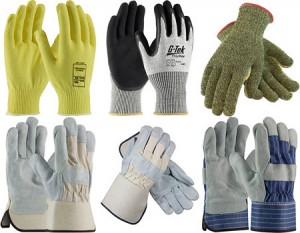Construction gloves: choosing the right protection is crucial to avoid injury
1.Be clear about the task to be done and identify the risks
The first and most obvious step is to identify the risks: Will hazardous chemicals need to be handled? Will cutting tools and welding equipment be used? These should be considered in the context of other hazards in the working area.
2. Assess how workers will come into contact with hazardous chemicals (ie. through splashing or immersion) and for how long
Hazardous chemicals are common on construction sites. Wet cement, for example, can cause caustic burns and dermatitis, as the powder becomes highly alkaline when mixed with water. Will workers’ hands be immersed in chemical mixtures or is the risk purely from splashing?
3. Choose the minimum level of chemical protection required
EN ISO 374-1: 2016 is the European standard for chemical protective gloves. Gloves are rated according to the type of chemicals being handled, their penetration resistance (ie if there any holes), the permeation rate (the time it takes for a chemical to break through the material) and material degradation.
Gloves are tested against 18 substances and are grouped into three categories: Type A gloves (offering the highest levels of protection) have a breakthrough time of 30 minutes for at least six chemicals on the list; Type B offer 30 minutes against at least three chemicals and Type C 10 minutes against at least one.
4. Consider dexterity when assessing the risks from cutting and abrasive work
Cutting wood or metal with a chop saw, cutting concrete, stone, brick and paving with a power saw or chasing out a wall for new electrical cabling can all lead to lacerations, cuts and punctures, loss of fingers, broken bones and long-term nerve damage.
All gloves reduce dexterity to a degree, however advanced the materials used to make them, so it is important gloves give the wearer enough dexterity (allowing small and delicate components to be picked up and handled, for example), while being thick enough to protect against cuts and abrasions. This can prevent workers removing gloves to do something and not putting them back on – which is when a large percentage of injuries occur.
5. Choose the minimum level of cut protection required
EN 388:2016 is the European Standard for cut protection in gloves. The ‘Coup blade cut test’ is used to rate the performance of glove material, with a circular blade moving back and forth until it breaks through. Abrasion, cut, tear and puncture resistance is given a value between one and five, with five being the highest.
High-performance materials in gloves, such as steel and fibreglass, give greater levels of protection but can blunt the blade in the EN 388 test. If this happens, the gloves must also be tested to EN ISO 13997, with a blade being dragged across the material and the force needed to cut through measured. This gives a cut protection level, from A to F, with F being the highest.
6. Thermal protection
Aside from chemical burns, construction workers are also at risk of burns from flames, steam, hot surfaces and liquids, from activities as simple as stripping paint and wallpaper on a small domestic project, to more specialist tasks such as cutting and welding steel reinforcement cages on major construction schemes.
If work is being carried out with flammable materials or in a hot environment, gloves need to be tested to EN 407:2004. There are four levels of protection (one to four, with four being the highest) in six categories, relating to the type of injury: flammability (A), contact heat (B), convective heat (C), radiant heat (D), small splashes of molten metal (E) and large splashes of molten metal (F).
7. Size and comfort
Hand protection, as with all PPE, needs to be comfortable, safe, appropriate for the season and working conditions. If gloves fit well, operatives will be happy to wear them. For example, some people are allergic to rubber latex, so ensure non-latex gloves are chosen, whenever possible.
However comfortable gloves are, hands can become hot, sweaty and uncomfortable. As many injuries occur when gloves are removed, it is important to ensure staff have breaks when they can remove gloves safely.
8. Involve employees in choosing hand protection
A construction site can be a stressful environment and working with staff is essential to ensure they are safe, comfortable and happy. Actively involving operatives in choosing PPE, including gloves, is a good strategy, as it has been shown that people are more likely to wear PPE if they take part in its selection.
9. Check suppliers’ and manufacturers’ certification
Check suppliers’ product certification and ask for details on manufacturing processes and quality assurance systems. This is particularly important for gloves offering the highest levels of protection, which are classed as ‘Complex PPE’ under the new PPE Regulation 2016/425, which comes into force on 21 April 2018.
This means they must be examined by a Notified Body (such as UK standards body BSI Group), which will issue an EC Type-Examination Certificate. Category III products also have to be manufactured under a quality management system, to ensure on-going production performance. This must also be assessed annually.
10. Get expert advice from a PPE supplier
Finally, and most importantly, speak to a PPE supplier. There is no one-size-fits-all solution to hand protection but reputable suppliers will provide independent and expert advice on the most appropriate gloves for activities and working conditions. This should be backed by evidence showing gloves have been tested in similar environments.
Hands are one of the most vulnerable parts of a construction worker’s body, so providing staff with the best protection is vital, not only to minimise working days lost through injury and illness but also to make them feel safe and valued, making them more confident in their roles, and more productive as a result.
For general advice, regarding the selection and suitability of safety gloves as PPE, contact us on 01525 309807.











